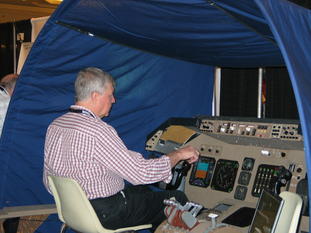
jackatscale6x
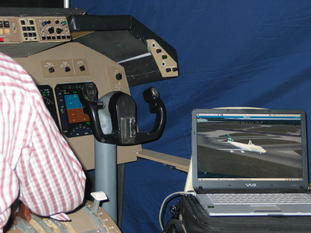
laptopview
 jackatscale6x |
 laptopview |
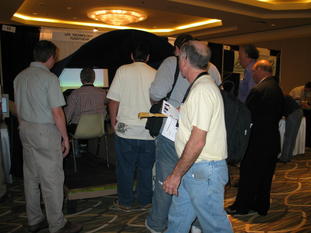 moresaturdayatscale6x |
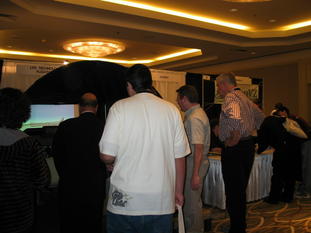 saturdayatscale6x |
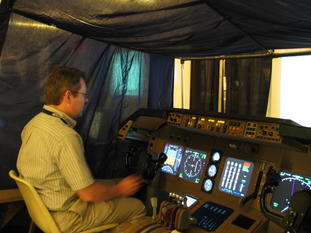 152_5255 |
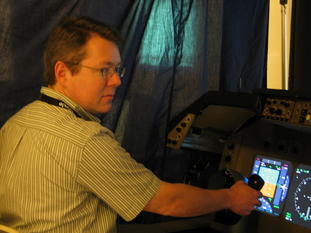 152_5256 |
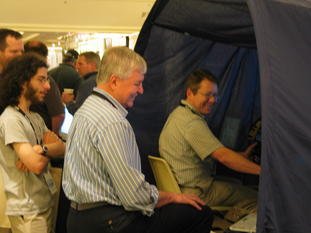 152_5259 |
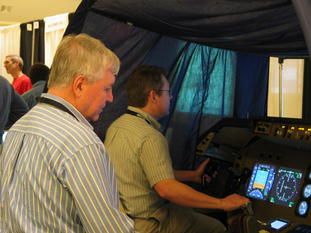 152_5260 |
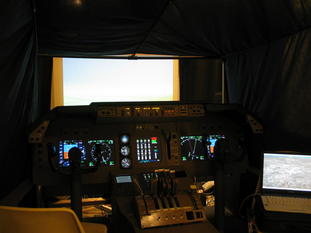 152_5269 |
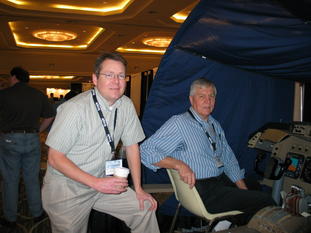 curtisandjack |
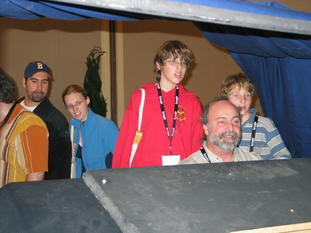 sundayatscale6x |
 150_5082 |
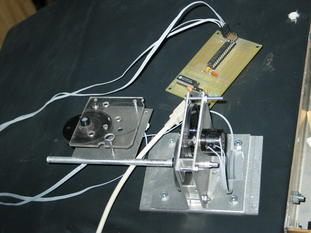 150_5083 |
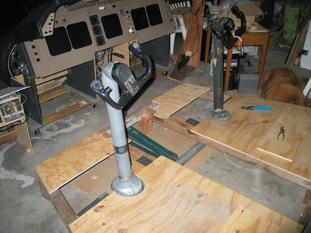 150_5057 |
 150_5059 |
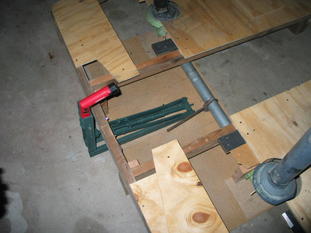 150_5060 |
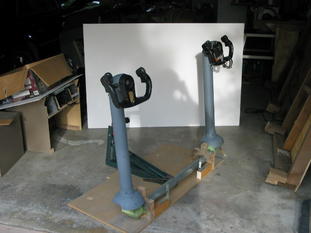 150_5065 |
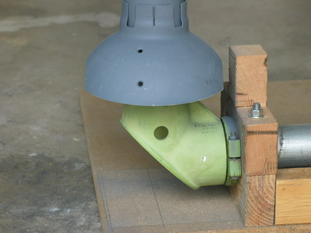 150_5067 |
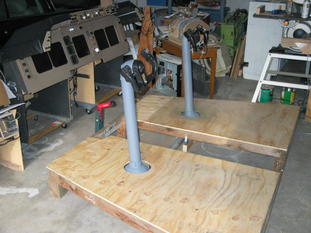 150_5068 |
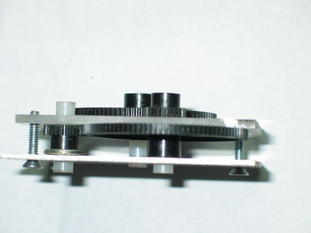 150_5071 |
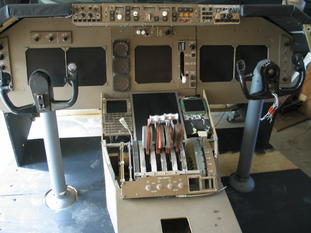 150_5075 |
Curtis has graciously offered the services and resources of the FlightGear website to publish the results of the project and on-going progress towards a fully functional system. Here is an initial, brief description of a work in progress to build a functional flight simulator with a cluster of Linux based PCs.
Since the intial architecture in 2004 employing 4 PCs to run the simulator and an additional machine to host the flightgear program, the project has made significant strides. The goal to host the entire simulator cockpit on a single PC was achieved in late 2006 with the software redesign to employ shared memory and multiple graphics cards. A side effect of this redesign was a large reduction in network traffic and a simplification of the interfaces between the programs resulting in increased frame rates. It also provides the basic structure to build a highly interactive and sophisticated instructors console for remote control of the simulator. The electronics and hardware interfaces were also redesigned to allow for the expansion of cockpit switches, displays, and function by simply installing additional "slave" boards to a master controller. Those circuits are currently under testing and review and will be converted to high-grade PCBs and offered for purchase along with the supporting software and drivers. The PCBs will support a wide range of hardware configurations required for various aircraft cockpits.
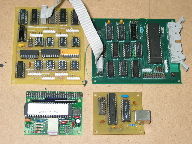 master_boards |
The panels were provided by Advanced Graphics Technologies http://www.aircraftsimulators.com and the electronics provide for interfacing 48 momentary switches, 128 static switches, and six rotary encoders, plus the drivers for 16 7-segment LEDs. The interface to the PC is via a parallel port and an interrupt driven linux device driver.
 107_0726 |
 107_0728 |
As the pictures show, the construction is heavy duty consisting of milled aluminum parts and internally milled levers to hold the linkage and mechanisms for each throttle. The auto-throttles were first operated with standard RC type servos and a phidget board via a USB interface. A new design is being installed using gears and DC gear-drive motors (200:1) to provide a greater amount of torque, a smoother action and throttle movement, and a tighter control of throttle positioning. RC type servos are a little light on the amount of torque they produce and have travel limits that restrict the amount of leverage you can apply and still get sufficient throttle travel. Plus response times can create a bit of a lag that complicates the design of a feedback type controller.
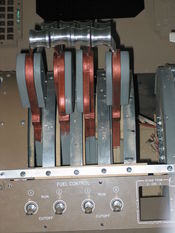 ready_for_cover |
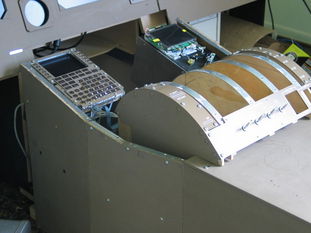 sitting_in_the_well |
 onemore |
 almost_done |
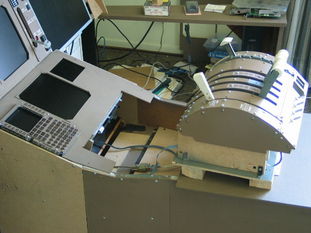 complete_unit |
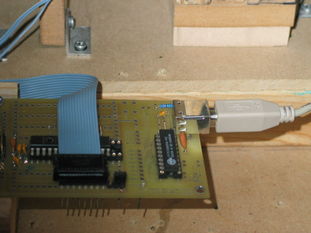 usb_ad |
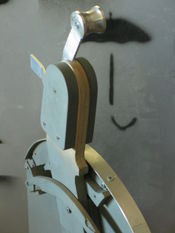 single2 |
A USB port is provided to read the throttle lever positions. The circuit board pictured here provides the USB chip that controls the 8-channel A/D chip. The chip provides a 12-bit data word for each channel and once initialized and programmed operates independently. The board provides a jumper to select the voltage for the pots; either +5V provided by the USB port or the option to connect an external power supply of a higher voltage
 img_2327 |
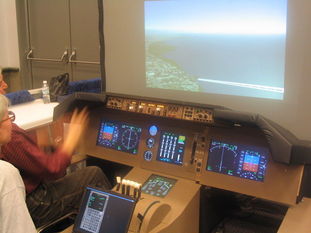 img_2335 |
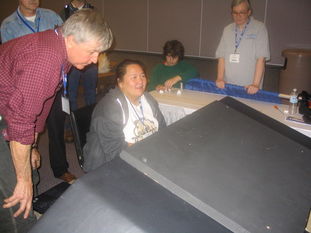 img_2336 |
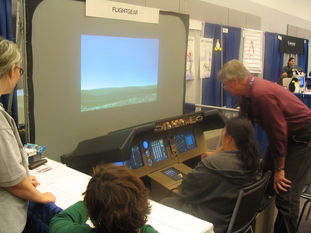 img_2338 |
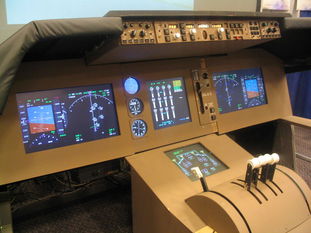 img_2343 |
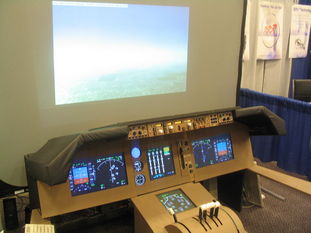 img_2344 |
 img_2347 |
FlightGear/Scale3X Interview (mp3)
Here is a movie of Jack's simulator in action (note until someone converts this to mpg or avi, it will most likely require a recent windows media player to view):
Here is a picture of Jack and Curt sitting in the Scale 2006 version of the simulator:
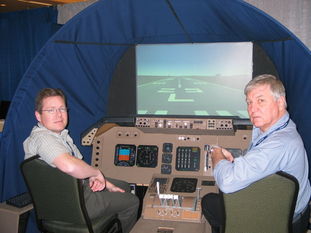 129_2957 |
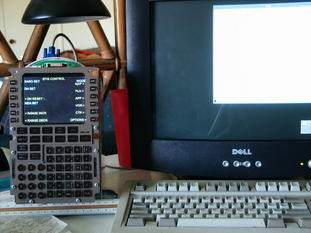 121_2189 |
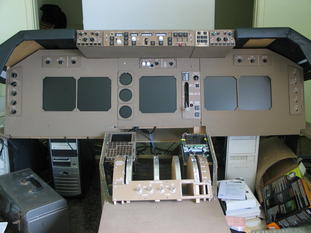 122_2247 |
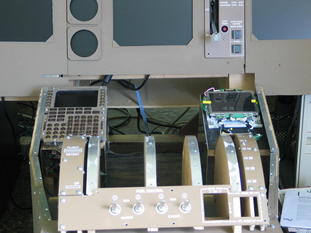 122_2248 |
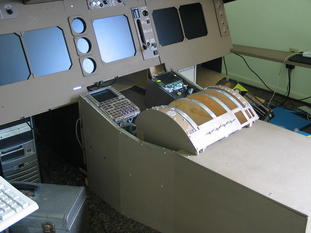 122_2250 |
 747hull |
Curtis Olson, who provided assistance and help in my understanding of the FlightGear architecture and C++
Jim Brennan, who provided volumes of data, manuals, and information on the 747 and its systems
Damion Shelton, the author of OpenGC, for his critique and assistance in the early development of the display software
Mark Harris, for the sophisticated and elegant 3D cloud software, I'm still trying to fully comprehend,
David Culp, who provided information on current cockpit procedures required to execute instrument approaches and engine start sequences, and finally
The FlightGear community and user groups for providing a wealth of ideas, discussions, and opinions through their emails on every aspect of computer modeling.